QUICK OVERVIEW
- ESP32 SoC (System on Chip) with WiFi and Bluetooth BLE
- 40MHz Crystal for CPU, 32.768KHz for RTC and low power operation
- 4MB Flash (32MBit)
- FTDI231 for the USB to Serial communication
- Auto-reset for automatic flash of new program
- On board 3.3V, 0.5A LDO, tested to work upto 1A
- 5dBi Peak Gain, 0.5dBi averange gain antenna
₹ 2,913.00
(inc GST)
₹ 2468.64 (+18% GST extra)
The NANO32 ESP32 IoT Development Board is the product by the designers of Arduino Nano and Espresso Lite (Thailand-based Gravitech and MakerAsia respectively) is the first third-party development board that provides another alternative to the eager-beavers community of geeks, makers, hackers and developers interested in the latest Wi-Fi/BT combo ‘wonder’ chip.
This NANO32 ESP32 IoT Development Board is the big brother of the ESP8266 development board. Nano32 is collaboration work by Makerasia and Gravitech from Thailand. It is base on ESP32 SoC. ESP32 the flagship product from Espressif (the company that design and produce ESP8266), but now with Xsensa Dual-Core 32-bit processors that case provides 600DMPIS. Let’s look at the features and Specification of this board.
The ESP32 is the latest chipset to be released by Shanghai-based, Espressif Systems that combines both Wi-Fi and Bluetooth (BT) capabilities within its dual CPU core and a rich accompaniment of hardware peripherals.
Designed as an ultra-low power chip using TSMC 40nm technology, it employs a customized CPU design based on the Cadence® Tensilica® Xtensa® Dual-Core 32-bit LX6 600 DMIPS.
Specifications and Features:
- ESP32 SoC (System on Chip) with WiFi and Bluetooth BLE
- 40MHz Crystal for CPU, 32.768KHz for RTC and low power operation
- 4MB Flash (32MBit)
- FTDI231 for the USB to Serial communication
- Auto-reset for an automatic flash of the new program
- Onboard 3.3V, 0.5A LDO tested to work up to 1A
- 5dBi Peak Gain, 0.5dBi average gain antenna
8. Key Features of ESP32 SoC:
- Xtensa® Dual-Core 32-bit LX6 microprocessors, up to 600 DMIPS
- Integrated 520 KB SRAM
- Integrated 802.11BGN HT40 Wi-Fi transceiver, baseband, stack and LWIP
- Integrated dual mode Bluetooth (classic and BLE)
- 4 MByte flash (32Mbit)
- 2V to 3.6V operating voltage
- -40°C to +125°C operating temperature
- 32 GPIO
9. ESP32 Wi-Fi :
- 11 b/g/n/e/i
- 11 n (2.4 GHz), up to 150 Mbps
- 11 e: QoS for wireless multimedia technology
- WMM-PS, UAPSD
- A-MPDU and A-MSDU aggregation
- Block ACK
- Fragmentation and defragmentation
- Automatic Beacon monitoring/scanning
- 11 i security features: pre-authentication and TSN
- Wi-Fi Protected Access (WPA)/WPA2/WPA2-Enterprise/Wi-Fi Protected Setup (WPS)
- Infrastructure BSS Station mode/SoftAP mode
- Wi-Fi Direct (P2P), P2P Discovery, P2P Group Owner mode and P2P
- Power Management
- UMA compliant and certified
- Antenna diversity and selection
10. ESP32 Bluetooth :
- Compliant with Bluetooth v4.2 BR/EDR and BLE specification
- Class-1, class-2 and class-3 transmitter r without external power amplifier
- Enhanced power control
- +10 dBm transmitting power
- NZIF receiver with -98 dBm sensitivity
- Adaptive Frequency Hopping (AFH)
- Standard HCI based on SDIO/SPI/UART
- High speed UART HCI, up to 4 Mbps
- BT 4.2 controller and host stack
- Service Discover Protocol (SDP)
- General Access Profile (GAP)
- Security Manage Protocol (SMP)
- Bluetooth Low Energy (BLE)
- ATT/GATT
- HID
- All GATT-based profile supported
- SPP-Like GATT-based profile
- BLE Beacon
- A2DP/AVRCP/SPP, HSP/HFP, RFCOMM
- CVSD and SBC for audio codec
- Bluetooth Piconet and Scatternet
11. GPIO Peripherals :
- 3 x UARTs, including hardware flow control
- 3 x SPI
- 2 x I2S
- 12 x ADC input channels
- 2 x DAC
- 2 x I2C
- PWM/timer input/output availabe on every GPIO pin
- OpenOCD debug interface with 32 kB TRAX buffer
- SDIO master/slave 50 MHz
- Supports external SPI flash up to 16 MB
- SD-card interface support
12. Security Related :
- IEEE 802.11 standard security features all supported, including WFA, WPA/WPA2 and WAPI
- Secure boot
- Flash encryption
- 1024-bit OTP, up to 768-bit for customers
- Cryptographic hardware acceleration:
- AES
- HASH (SHA-2) library
- RSA
- ECC
- Random Number Generator (RNG)
Package Includes :
1 x NANO32 ESP32 IoT Development Board
Length (mm)
28
Width (mm)
54
Height (mm)
12
Weight (gm)
10
Shipment Weight
0.095 kg
Shipment Dimensions
7 × 3 × 2 cm

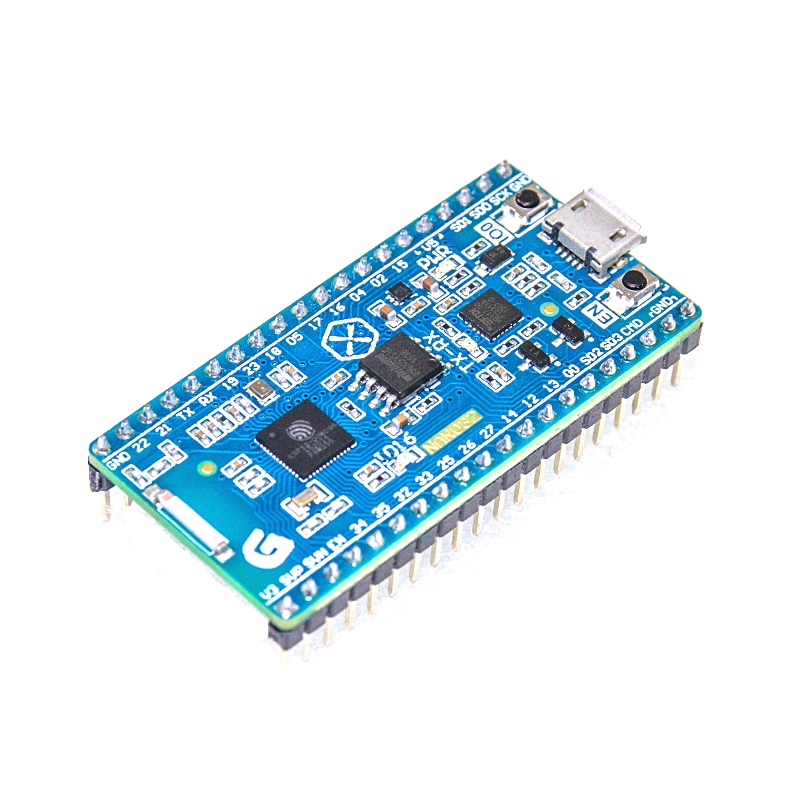
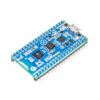
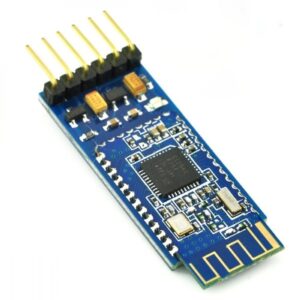
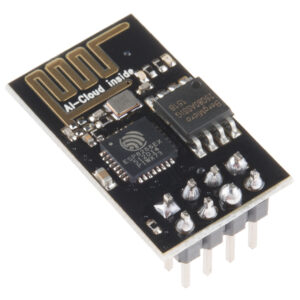
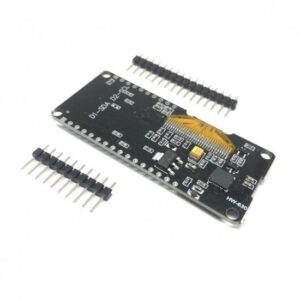
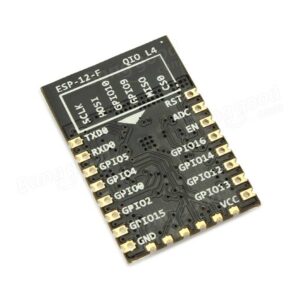
Reviews
There are no reviews yet.